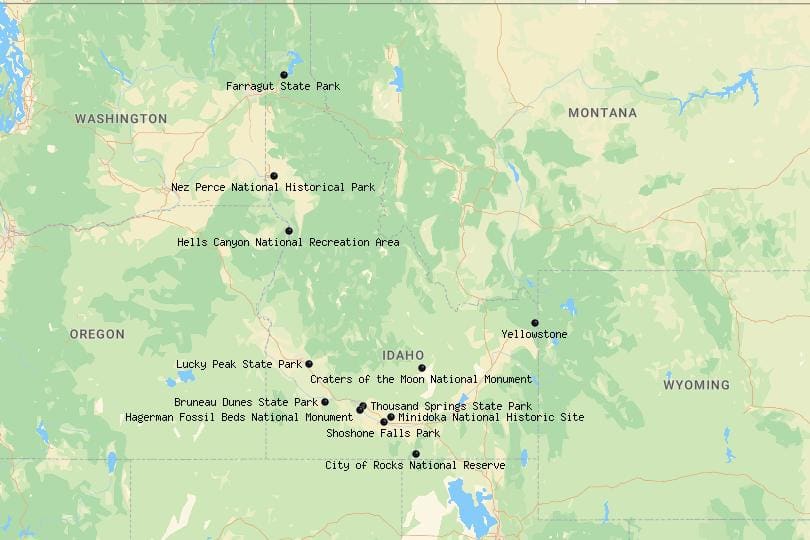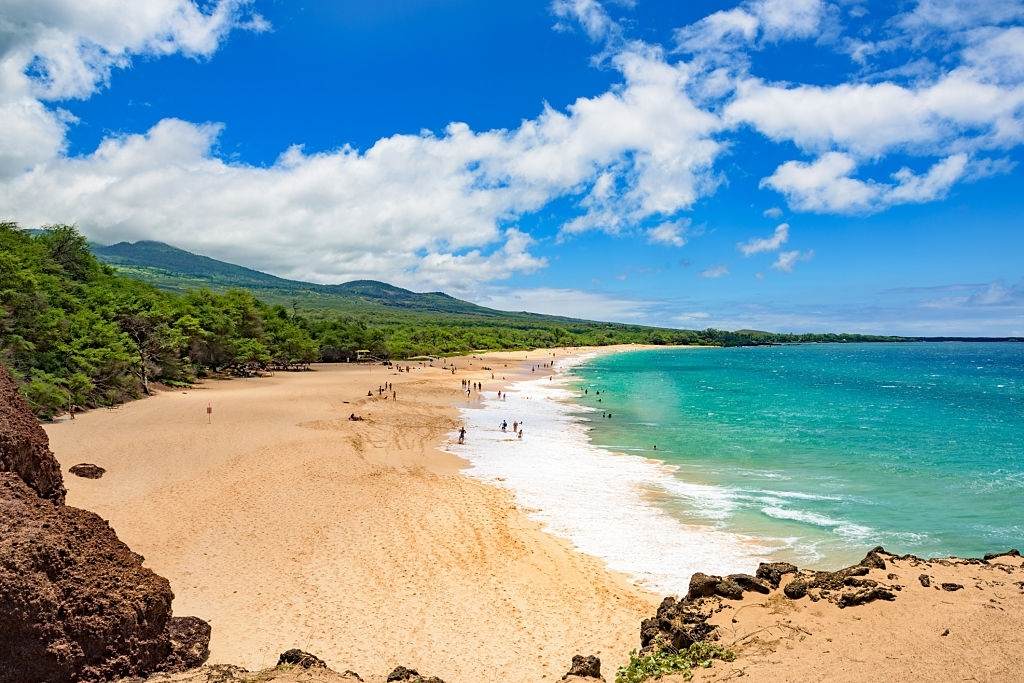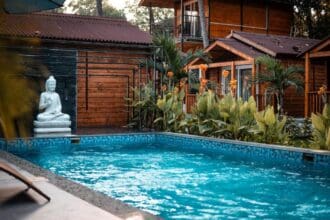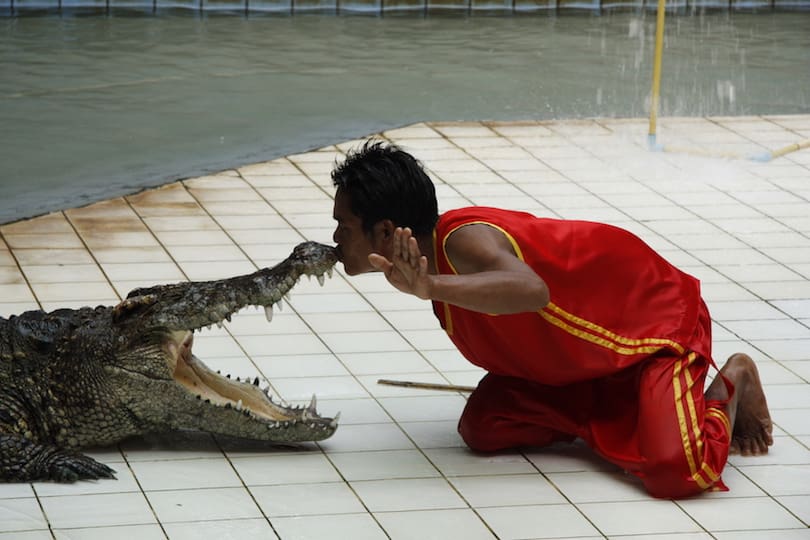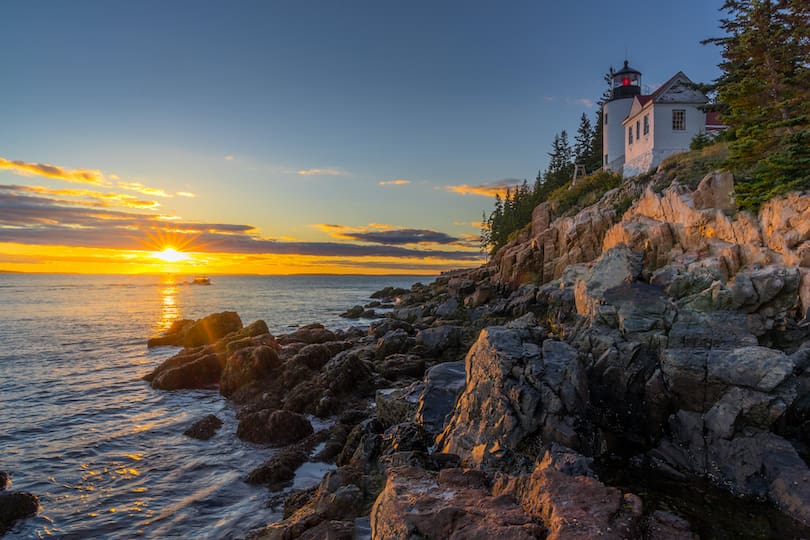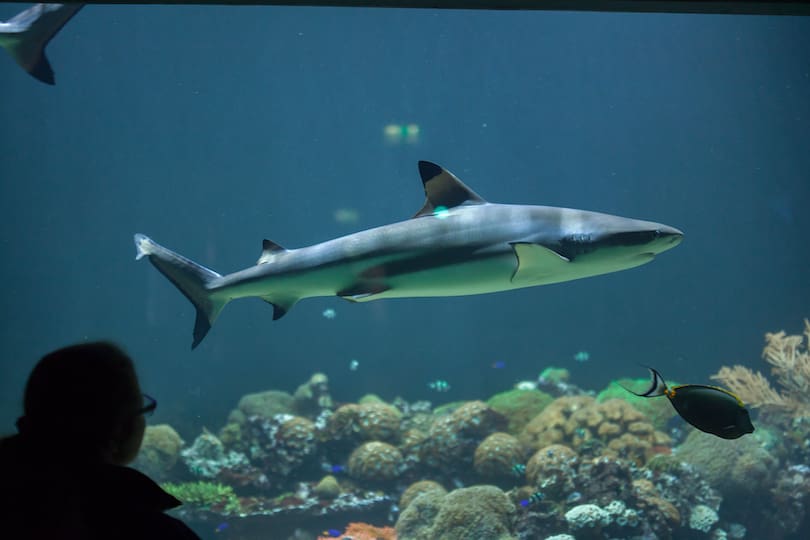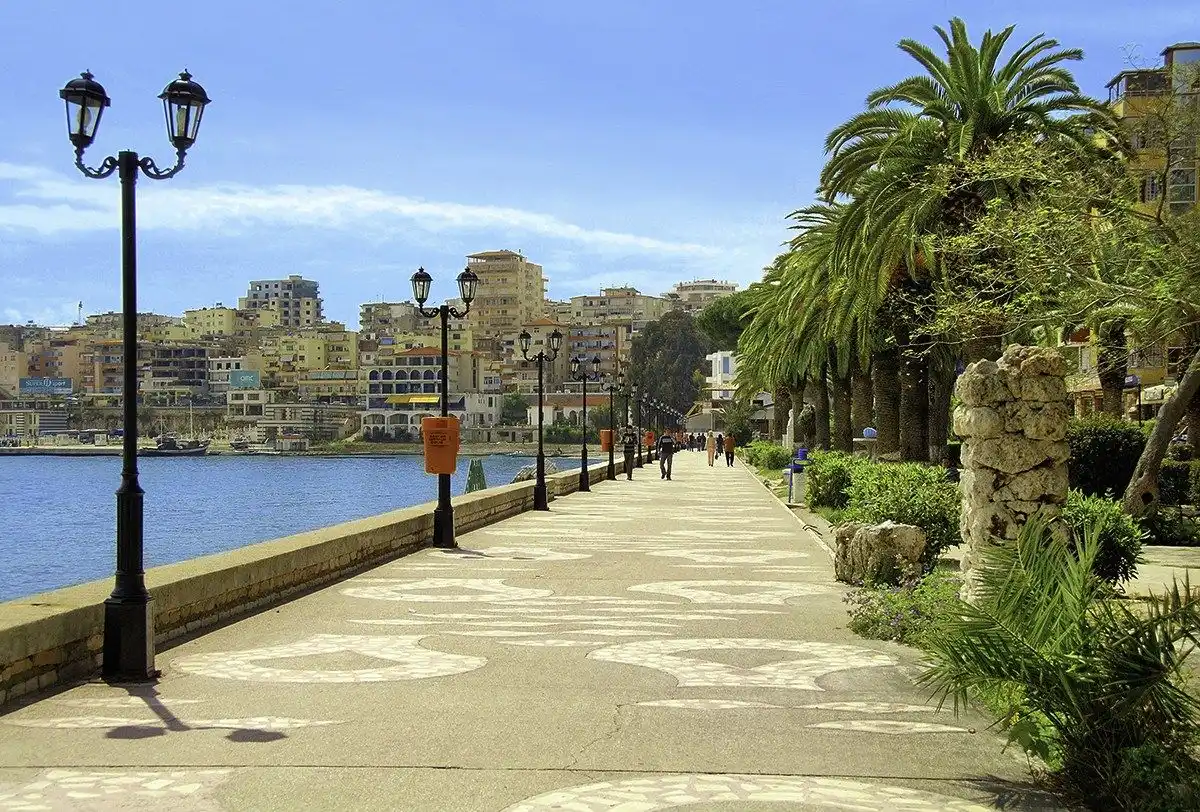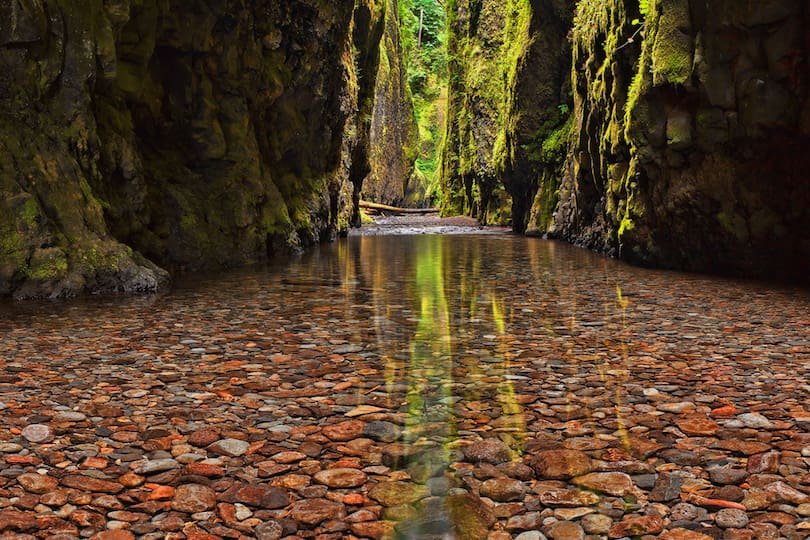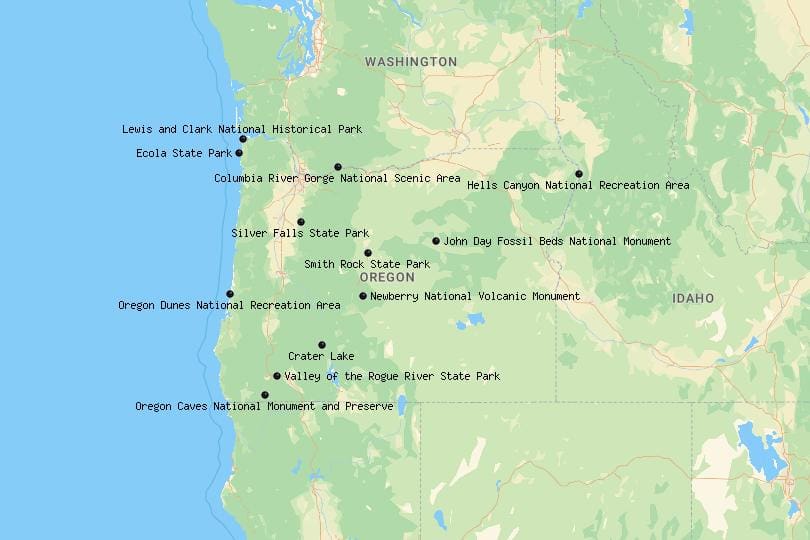Idaho, often referred to as the “Gem State,” is a treasure trove of natural beauty. From its rugged mountains to serene lakes and lush forests, Idaho offers some of the most breathtaking landscapes in the United States. For outdoor enthusiasts, nature lovers, and adventurers alike, Idaho’s national and state parks provide endless opportunities for exploration and discovery. In this comprehensive guide, we will take you through the 12 best national and state parks in Idaho , highlighting their unique features, must-see attractions, and tips for making the most of your visit.
Whether you’re planning a weekend getaway or an extended vacation, these parks promise unforgettable experiences. Let’s dive into the wonders of Idaho’s natural landscapes and uncover why they deserve a spot on your travel bucket list.
1. Sawtooth National Recreation Area: A Crown Jewel of Idaho
Why Visit Sawtooth National Recreation Area?
Nestled in central Idaho, the Sawtooth National Recreation Area is a paradise for hikers, anglers, and photographers. Known for its jagged peaks, alpine lakes, and pristine wilderness, this park spans over 756,000 acres and includes parts of the Sawtooth, Boise, and Challis National Forests. The area is home to more than 300 high-elevation lakes, making it a haven for fishing and kayaking enthusiasts. Its diverse ecosystems support a wide range of wildlife, including elk, moose, mountain goats, and even the elusive wolverine.
The Sawtooth NRA is not just about its stunning scenery; it’s also steeped in history. Native American tribes once roamed these lands, and remnants of early settlers’ cabins can still be found scattered throughout the region. Whether you’re here for the adventure or simply to soak in the tranquility, the Sawtooth National Recreation Area offers something for everyone.
Top Attractions in Sawtooth National Recreation Area
Redfish Lake
One of the most iconic landmarks in the Sawtooth NRA, Redfish Lake gets its name from the sockeye salmon that once thrived here. Today, the lake serves as a hub for outdoor activities, offering crystal-clear waters perfect for swimming, boating, and paddleboarding. Surrounded by towering peaks, the lake provides a picturesque backdrop for picnics and relaxation. During the summer months, the Redfish Lake Lodge hosts live music events and guided boat tours, adding a touch of charm to your visit.
Sawtooth Wilderness
For those seeking solitude and adventure, the Sawtooth Wilderness is a dream come true. Spanning over 217,000 acres, this federally protected wilderness area boasts over 700 miles of trails, ranging from easy day hikes to multi-day backpacking adventures. Popular trails include the Alice-Toxaway Loop , which takes you through alpine meadows, dense forests, and alongside sparkling lakes. Wildlife sightings are common here, so keep your camera ready for close encounters with deer, elk, and birds of prey.
Stanley Basin
The charming town of Stanley serves as the gateway to the Sawtooth NRA. Located at the base of the Sawtooth Mountains, Stanley is a small but vibrant community filled with cozy lodges, restaurants, and shops. It’s also a great place to stock up on supplies before heading into the wilderness. In winter, Stanley transforms into a snowy wonderland, attracting cross-country skiers and snowmobilers.
Travel Tips
- Plan your visit during late spring to early fall for optimal weather conditions.
- Bring sturdy hiking boots and plenty of water, as many trails are remote and lack facilities.
- Consider renting a kayak or paddleboard to explore Redfish Lake from the water.
- Check road conditions before traveling, as some access points may be closed due to snow in early spring.
2. Craters of the Moon National Monument and Preserve: A Lunar Landscape on Earth
Why Visit Craters of the Moon?
If you’ve ever wondered what it would feel like to walk on the moon, Craters of the Moon National Monument and Preserve is the place to visit. This otherworldly landscape features vast lava fields, cinder cones, and underground caves formed by volcanic activity thousands of years ago. Covering over 750,000 acres, the preserve is a testament to the raw power of nature and offers a unique experience unlike any other in Idaho.
Designated as a national monument in 1924, Craters of the Moon has since become a popular destination for geologists, photographers, and curious travelers. Its stark beauty and eerie silence make it a perfect escape from the hustle and bustle of daily life.
Top Attractions in Craters of the Moon
Inferno Cone
Standing tall amidst the blackened lava fields, Inferno Cone is one of the park’s most recognizable features. This massive cinder cone offers a challenging but rewarding climb, culminating in panoramic views of the surrounding landscape. On a clear day, you can see for miles, taking in the vast expanse of lava flows and distant mountain ranges.
Caves Trail
For those who prefer subterranean adventures, the Caves Trail is a must-do. This short but fascinating hike leads to several lava tubes, including Indian Tunnel and Dewdrop Cave . These natural tunnels were formed when molten lava cooled and hardened on the surface while continuing to flow beneath. Exploring these caves requires a flashlight and a sense of adventure, but the experience is well worth it.
Tree Molds
One of the park’s most intriguing geological formations, Tree Molds are hollow impressions left behind when ancient trees were engulfed by flowing lava. These molds provide a glimpse into the park’s fiery past and serve as a reminder of the dynamic forces that shaped this landscape.
Travel Tips
- Wear sturdy shoes, as the terrain can be uneven and rocky.
- Bring a flashlight if you plan to explore the caves.
- Visit during sunrise or sunset for dramatic lighting and fewer crowds.
- Download a map of the park, as cell service is unreliable in many areas.
3. Hells Canyon National Recreation Area: North America’s Deepest Gorge
Why Visit Hells Canyon?
Carved by the mighty Snake River, Hells Canyon is the deepest river gorge in North America, plunging over 8,000 feet at its deepest point. This rugged and remote area offers unparalleled opportunities for whitewater rafting, jet boating, and wildlife watching. Stretching along the border between Idaho and Oregon, Hells Canyon is a true wilderness experience, where modern distractions fade away and nature takes center stage.
Despite its intimidating name, Hells Canyon is far from hellish. Its dramatic cliffs, lush vegetation, and abundant wildlife create a harmonious blend of ruggedness and serenity. Whether you’re an adrenaline junkie or someone looking to reconnect with nature, this park has something for everyone.
Top Attractions in Hells Canyon
Snake River Rafting
For thrill-seekers, whitewater rafting on the Snake River is an unforgettable experience. Guided tours take you through Class III and IV rapids, surrounded by towering cliffs and lush vegetation. Along the way, you’ll have the chance to spot bighorn sheep, eagles, and other wildlife. If you prefer a more relaxed pace, opt for a scenic float trip instead.
Seven Devils Mountains
Rising dramatically above the canyon floor, the Seven Devils Mountains offer some of the best hiking and camping opportunities in the region. Trails range from easy day hikes to strenuous climbs, catering to all skill levels. The summit of He Devil Peak , the highest point in the range, rewards you with breathtaking views of the canyon below.
Historic Homesteads
Scattered throughout the canyon are remnants of pioneer homesteads, providing a glimpse into the lives of early settlers who braved the harsh conditions of this rugged landscape. Interpretive signs and ranger-led programs help bring these stories to life, offering valuable insights into the area’s rich history.
Travel Tips
- Book a guided rafting tour if you’re new to whitewater adventures.
- Pack layers, as temperatures can vary significantly throughout the day.
- Be prepared for limited cell service in this remote area.
- Bring binoculars for optimal wildlife viewing.
4. City of Rocks National Reserve: A Climber’s Paradise
Why Visit City of Rocks?
Known as one of the premier rock climbing destinations in the United States, City of Rocks National Reserve boasts towering granite spires and boulders that attract climbers from around the world. But even if you’re not a climber, this park offers stunning scenery and peaceful hiking trails. Located near the Utah border, the reserve spans over 14,000 acres and is part of the larger Albion Mountains.
The City of Rocks has a rich cultural history, having served as a landmark for pioneers traveling westward along the California Trail. Today, it remains a symbol of resilience and perseverance, drawing visitors who seek both physical and spiritual challenges.
Top Attractions in City of Rocks
Twin Sisters
Perhaps the most iconic feature of the reserve, the Twin Sisters are two towering granite spires that dominate the skyline. They are a favorite among climbers and photographers alike, offering a striking contrast against the blue Idaho sky. Even if you don’t plan to scale them, the view from the base is awe-inspiring.
Almo Creek Campground
A great base camp for exploring the reserve, Almo Creek Campground offers amenities like showers, picnic tables, and fire rings. It’s conveniently located near many of the park’s main attractions, making it an ideal spot for families and groups.
Smoking Circle Petroglyphs
For a dose of history, head to the Smoking Circle Petroglyphs , where ancient Native American rock art can be found etched into the granite. These intricate designs provide a window into the lives of the people who once called this area home.
Travel Tips
- If you’re new to climbing, consider hiring a local guide.
- Visit during the spring or fall for milder temperatures.
- Respect the park’s fragile ecosystem by staying on designated trails.
- Bring plenty of water, as there are no facilities within the reserve.
5. Bruneau Dunes State Park: Home to North America’s Tallest Single-Dune
Why Visit Bruneau Dunes?
Located in southern Idaho, Bruneau Dunes State Park is home to North America’s tallest single-structured sand dune, standing at 470 feet tall. This unique landscape offers a variety of activities, from sandboarding to stargazing. Despite its arid appearance, the park is teeming with life, supporting a surprising diversity of plants and animals.
The park’s combination of desert and wetland habitats makes it a fascinating study in contrasts. While the dunes themselves are barren and windswept, nearby ponds and marshes provide critical habitat for migratory birds and amphibians.
Top Attractions in Bruneau Dunes
Observatory
One of the park’s hidden gems, the Bruneau Dunes Observatory hosts regular star parties, where visitors can view distant galaxies and planets through powerful telescopes. Thanks to minimal light pollution, the night skies here are among the darkest in the country, making it a prime location for astronomy enthusiasts.
Dune Climbing
For a fun and challenging activity, try climbing the towering dune. Once you reach the top, grab a rented sandboard or sled and race back down. It’s an exhilarating way to experience the park’s unique terrain.
Visitor Center
Before embarking on your adventure, stop by the visitor center to learn about the park’s geology and history through interactive exhibits. Rangers are available to answer questions and provide recommendations based on your interests.
Travel Tips
- Rent a sandboard or sled from the visitor center for an unforgettable experience.
- Bring sunscreen and a hat, as there is little shade in the dune area.
- Check the park’s calendar for special events like astronomy nights.
- Arrive early to secure parking, especially during peak seasons.
6. Priest Lake State Park: A Hidden Gem in Northern Idaho
Why Visit Priest Lake?
Tucked away in northern Idaho, Priest Lake State Park offers a tranquil escape surrounded by dense forests and pristine waters. With three separate units—Beaver Creek, Lionhead, and Upper Priest Lake—the park provides ample opportunities for relaxation and adventure. Known for its crystal-clear waters and secluded beaches, Priest Lake is a favorite among locals but remains relatively unknown to out-of-state visitors.
The lake itself is divided into two sections: the main body of water and the quieter Upper Priest Lake, accessible only by boat or trail. This division creates a unique dynamic, allowing visitors to choose between bustling activity and peaceful solitude.
Top Attractions in Priest Lake
Upper Priest Lake
Accessible only by boat or trail, Upper Priest Lake is a secluded paradise for those seeking solitude. Here, you’ll find untouched wilderness, pristine waters, and abundant wildlife. Kayakers and canoeists love exploring this area, as motorized boats are restricted, ensuring a peaceful experience.
Osborne Bay
For families and casual visitors, Osborne Bay offers a sandy beach, picnic tables, and a playground. It’s a great spot for swimming, sunbathing, and enjoying a leisurely afternoon outdoors.
Chimney Rock Trail
This moderate hike rewards you with sweeping views of the lake and surrounding mountains. Along the way, you’ll pass through dense forests and open meadows, making it a delightful journey for all ages.
Travel Tips
- Rent a canoe or kayak to explore the quieter corners of the lake.
- Visit during the shoulder seasons (spring or fall) to avoid summer crowds.
- Pack bug spray, as mosquitoes can be prevalent near the water.
- Bring a camera to capture the stunning scenery, especially during sunrise and sunset.
7. Thousand Springs State Park: A Water Lover’s Dream
Why Visit Thousand Springs?
Named for the countless springs that flow into the Snake River, Thousand Springs State Park is a haven for water sports enthusiasts. The park encompasses several units, each offering unique attractions and activities. From fishing and boating to hiking and birdwatching, there’s no shortage of things to do here.
The park’s proximity to Interstate 84 makes it easily accessible for travelers passing through southern Idaho. Despite its convenience, Thousand Springs retains a sense of remoteness, thanks to its lush vegetation and abundant wildlife.
Top Attractions in Thousand Springs
Ritter Island Unit
Once a private estate, Ritter Island is now open to the public for picnicking and exploring. The island’s historic buildings and gardens add a touch of elegance to the natural surroundings, making it a popular spot for weddings and special events.
Niagara Springs
Known for its excellent trout fishing, Niagara Springs is a favorite among anglers. The cold, clear waters of the spring provide ideal conditions for rainbow and brown trout, ensuring a productive day on the water.
Box Canyon Springs
Marvel at the turquoise waters of Box Canyon Springs , which flow directly into the Snake River. This natural wonder is a testament to the area’s rich hydrology and supports a diverse array of aquatic life.
Travel Tips
- Bring your fishing gear and a valid Idaho fishing license.
- Explore the park’s interpretive trails to learn about its rich history.
- Be mindful of seasonal water levels, which can affect certain activities.
- Pack a picnic lunch to enjoy at one of the park’s scenic overlooks.
8. Harriman State Park: A Wildlife Haven
Why Visit Harriman?
Located in eastern Idaho, Harriman State Park is part of the Greater Yellowstone Ecosystem, making it a prime destination for wildlife viewing. Moose, elk, and sandhill cranes are commonly spotted here, especially during the early morning and evening hours. The park’s rolling meadows, dense forests, and winding rivers create a picturesque setting that feels worlds away from civilization.
Harriman is also steeped in history, having once been a working cattle ranch. Many of the original structures remain intact, providing a glimpse into the area’s agricultural past. Today, the park balances preservation with recreation, offering a wide range of activities for visitors of all ages.
Top Attractions in Harriman
Silver Lake
A serene spot for fly fishing and birdwatching, Silver Lake is surrounded by lush vegetation and towering pines. It’s a great place to relax and unwind, whether you’re casting a line or simply enjoying the peaceful ambiance.
Railroad Ranch Historic District
Step back in time as you explore the remnants of a turn-of-the-century cattle ranch. The Railroad Ranch Historic District features restored buildings, interpretive signs, and guided tours that bring the park’s history to life.
Big Springs
One of the largest springs in the United States, Big Springs produces millions of gallons of water daily. The spring feeds Henrys Fork, a renowned trout stream that attracts anglers from around the world. Visitors can walk along a boardwalk that winds through the spring’s lush vegetation, offering close-up views of the bubbling waters.
Travel Tips
- Bring binoculars for optimal wildlife viewing.
- Visit during the fall for vibrant foliage and increased chances of spotting elk.
- Stay quiet and patient while observing animals to avoid startling them.
- Check the park’s schedule for ranger-led programs and guided hikes.
9. Ponderosa State Park: Adventure in McCall
Why Visit Ponderosa?
Situated on the shores of Payette Lake, Ponderosa State Park offers year-round recreation opportunities. Whether you’re skiing in the winter or paddling in the summer, this park has something for everyone. Located just minutes from downtown McCall, Ponderosa is a convenient yet immersive way to experience Idaho’s natural beauty.
The park’s diverse landscapes include dense forests, open meadows, and sandy beaches, creating a versatile environment for outdoor activities. Its central location also makes it a hub for festivals and events, such as the annual Winter Carnival.
Top Attractions in Ponderosa
Osprey Point
A scenic overlook with interpretive signs about the local ecosystem, Osprey Point offers stunning views of Payette Lake and the surrounding mountains. It’s a great spot for photography and birdwatching, especially during the spring and summer months when ospreys return to nest.
North Beach
A family-friendly beach area with picnic tables and a playground, North Beach is perfect for swimming, sunbathing, and building sandcastles. Lifeguards are on duty during peak seasons, ensuring a safe and enjoyable experience for all.
Cross-Country Ski Trails
During the winter, the park transforms into a snowy wonderland ideal for Nordic skiing. Over 15 miles of groomed trails wind through the forest, offering a peaceful and invigorating way to explore the park.
Travel Tips
- Reserve a campsite early, as this park fills up quickly during peak seasons.
- Take advantage of the park’s rental equipment, including kayaks and snowshoes.
- Dress in layers, as weather conditions can change rapidly.
- Check the park’s website for updates on trail conditions and closures.
10. Heyburn State Park: Idaho’s Oldest State Park
Why Visit Heyburn?
Established in 1908, Heyburn State Park holds the distinction of being Idaho’s oldest state park. Located along the shores of Lake Coeur d’Alene, it combines natural beauty with historical significance. The park spans over 5,000 acres and includes a mix of forests, wetlands, and grasslands, providing habitat for a wide range of wildlife.
Heyburn is also a gateway to the Trail of the Coeur d’Alenes , a 73-mile paved bike path that connects the park to neighboring communities. Whether you’re cycling, hiking, or simply relaxing by the water, Heyburn offers a wealth of opportunities for outdoor enjoyment.
Top Attractions in Heyburn
Trail of the Coeur d’Alenes
This paved bike path winds through the park, offering stunning views of Lake Coeur d’Alene and the surrounding hills. It’s a popular route for cyclists, joggers, and walkers, with rest stops and interpretive signs along the way.
Chatcolet Lake
A quieter alternative to Lake Coeur d’Alene, Chatcolet Lake is ideal for kayaking and fishing. Its calm waters and scenic shoreline make it a favorite among locals who prefer a more laid-back atmosphere.
Plummer House
A historic homestead that provides insight into the park’s past, Plummer House is a must-visit for history buffs. Guided tours are available, offering a deeper understanding of the area’s cultural heritage.
Travel Tips
- Bring your own bike to fully enjoy the Trail of the Coeur d’Alenes.
- Visit during weekdays to avoid weekend crowds.
- Stop by the visitor center to pick up a map and learn about upcoming events.
- Pack a picnic lunch to enjoy at one of the park’s scenic overlooks.
11. Castle Rocks State Park: A Hidden Treasure
Why Visit Castle Rocks?
With its dramatic granite formations and expansive grasslands, Castle Rocks State Park feels like stepping into a different world. It’s a lesser-known gem that offers solitude and stunning vistas. Located near the Utah border, the park spans over 3,000 acres and is part of the larger Albion Mountains.
Castle Rocks is particularly popular among rock climbers, who flock to the park for its challenging routes and breathtaking scenery. However, even non-climbers will appreciate the park’s natural beauty and peaceful atmosphere.
Top Attractions in Castle Rocks
South Hill
Offers panoramic views of the entire park, South Hill is a great spot for photography and birdwatching. The trail to the summit is relatively easy, making it accessible for all skill levels.
Rock Climbing Routes
Over 400 routes cater to climbers of all skill levels, from beginners to experts. The park’s granite spires and boulders provide endless opportunities for vertical adventures.
Wildflower Blooms
Springtime brings a colorful display of wildflowers across the park. Lupines, Indian paintbrush, and arrowleaf balsamroot blanket the grasslands, creating a vibrant tapestry of colors.
Travel Tips
- Download offline maps before arriving, as cell service is limited.
- Bring plenty of water, as there are no facilities within the park.
- Respect the fragile ecosystem by packing out all trash.
- Consider hiring a local guide if you’re new to climbing.
12. Lake Cascade State Park: Year-Round Fun
Why Visit Lake Cascade?
Surrounded by rolling hills and towering pines, Lake Cascade State Park is a hub for outdoor recreation. From boating in the summer to ice fishing in the winter, this park offers endless possibilities. Located just an hour north of Boise, it’s a convenient escape for city dwellers looking to reconnect with nature.
The park’s centerpiece, Cascade Reservoir , covers over 28,000 acres and is one of the largest bodies of water in Idaho. Its size and depth make it ideal for a variety of water sports, including water skiing, wakeboarding, and scuba diving.
Top Attractions in Lake Cascade
Cascade Reservoir
Ideal for water skiing, wakeboarding, and fishing, Cascade Reservoir is a favorite among locals and visitors alike. The reservoir’s warm waters and sandy beaches make it a popular destination during the summer months.
Winter Sports Complex
Hosts events like snowmobiling races and ice fishing tournaments, the Winter Sports Complex is a hive of activity during the colder months. Cross-country skiing and snowshoeing trails are also available, providing a peaceful way to explore the park.
Hiking Trails
Explore the park’s diverse landscapes on foot, with trails ranging from easy strolls to challenging climbs. The Osprey Point Trail offers stunning views of the reservoir and surrounding mountains, making it a must-do for hikers.
Travel Tips
- Check the park’s website for updates on seasonal activities.
- Pack warm clothing if visiting in the winter.
- Reserve campsites well in advance during peak seasons.
- Bring your own equipment, as rentals are limited.
Travel Tips for Visiting Idaho’s Parks
- Always check park regulations and guidelines before your visit.
- Carry a first aid kit and emergency supplies, especially for remote areas.
- Leave no trace by disposing of waste properly and respecting wildlife.
- Plan ahead for weather conditions, as they can vary significantly across the state.
- Download offline maps and apps for navigation, as cell service is unreliable in many areas.
Other Tourist Attractions in Idaho
- Shoshone Falls: Often referred to as the “Niagara of the West,” Shoshone Falls is taller than Niagara Falls and offers stunning views year-round.
- Sun Valley Resort: A world-class ski resort known for its luxurious accommodations and vibrant après-ski scene.
- Idaho Potato Museum: Learn about the history and culture of Idaho’s famous crop through interactive exhibits and tastings.
- World Center for Birds of Prey: Home to the largest collection of raptors in the world, this center offers educational programs and flight demonstrations.
Conclusion
Idaho’s national and state parks are a testament to the state’s natural beauty and diverse landscapes. Whether you’re seeking adventure, relaxation, or a deeper connection with nature, these parks have something for everyone. By planning ahead and respecting the environment, you can create memories that will last a lifetime. So pack your bags, lace up your hiking boots, and get ready to explore the wonders of Idaho!
FAQs
- What is the best time to visit Idaho’s parks?
- Late spring to early fall is ideal for most parks.
- Are pets allowed in Idaho’s national and state parks?
- Yes, but they must be kept on a leash.
- Do I need a permit to hike in Sawtooth Wilderness?
- Yes, permits are required for overnight stays.
- Is Craters of the Moon suitable for children?
- Absolutely! Many trails are easy and family-friendly.
- Can I fish in Lake Cascade without a license?
- No, a valid Idaho fishing license is required.
- What wildlife might I see in Hells Canyon?
- Bighorn sheep, mountain goats, and bald eagles.
- Are there guided tours available at City of Rocks?
- Yes, local outfitters offer climbing and hiking tours.
- How do I get to Priest Lake State Park?
- The park is accessible via Highway 57 in northern Idaho.
- Is Thousand Springs State Park wheelchair accessible?
- Some areas are accessible; contact the park for details.
- What should I pack for a trip to Bruneau Dunes?
- Sandboards, sunscreen, and plenty of water.

